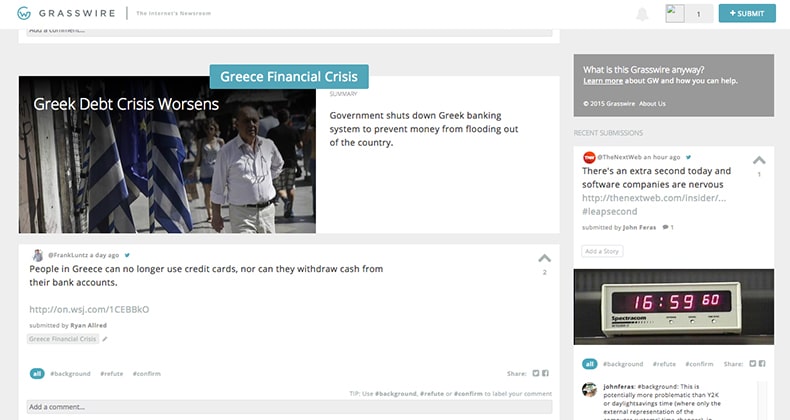Stefaan Verhulst
Renee Knake at Bloomberg Law: “Big data analytics are changing how lawyers find clients, conduct legal research and discovery, draft contracts and court papers, manage billing and performance, predict the outcome of a matter, select juries, and more. Ninety percent of corporate legal departments, law firms, and government lawyers note that data analytics are applied in their organizations, albeit in limited ways, according to a 2015 survey. The Legal Services Corporation, the largest funder of civil legal aid for low-income individuals in the United States, recommended in 2012 that all states collect and assess data on case progress/outcomes to improve the delivery of legal services. Lawyers across all sectors of the market increasingly recognize how big data tools can enhance their work.
A growing literature advocates for businesses and governmental bodies to adopt data ethics policies, and many have done so. It is not uncommon to find data-use policies prominently displayed on company or government websites, or required a part of a click-through consent before gaining access to a mobile app or webpage. Data ethics guidelines can help avoid controversies, especially when analytics are used in potentially manipulative or exploitive ways. Consider, for example, Target’s data analytics that uncovered a teen’s pregnancy before her father did, or Orbitz’s data analytics offered pricier hotels to Mac users. These are just two of numerous examples in recent years where companies faced criticism for how they used data analytics.
While some law firms and legal services organizations follow data-use policies or codes of conduct, many do not. Perhaps this is because the legal profession was not transformed as early or rapidly as other industries, or because until now, big data in legal was largely limited to e-discovery, where the data use is confined to the litigation and is subject to judicial oversight. Another reason may be that lawyers believe their rules of professional conduct provide sufficient guidance and protection. Unlike other industries, lawyers are governed by a special code of ethical obligations to clients, the justice system, and the public. In most states, this code is based in part upon the American Bar Association (ABA) Model Rules of Professional Conduct, though rules often vary from jurisdiction to jurisdiction. Several of the Model Rules are relevant to big data use. That said, the Model Rules are insufficient for addressing a number of fundamental ethical concerns.
At the moment, legal ethics for big data analytics is at best an incomplete mix of professional conduct rules and informal policies adopted by some, but not all law practices. Given the increasing prevalence of data analytics in legal services, lawyers and law students should be familiar not only with the relevant professional conduct rules, but also the ethical questions left unanswered. Listed below is a brief summary of both, followed by a proposed legal ethics agenda for data analytics. …
Questions Unanswered by Lawyer Ethics Rules
Access/Ownership. Who owns the original data — the individual source or the holder of the pooled information? Who owns the insights drawn from its analysis? Who should receive access to the data compilation and the results?
Anonymity/Identity. Should all personally identifiable or sensitive information be removed from the data? What protections are necessary to respect individual autonomy? How should individuals be able to control and shape their electronic identity?
Consent. Should individuals affirmatively consent to use of their personal data? Or is it sufficient to provide notice, perhaps with an opt-out provision?
Privacy/Security. Should privacy be protected beyond the professional obligation of client confidentiality? How should data be secured? The ABA called upon private and public sector lawyers to implement cyber-security policies, including data use, in a 2012resolution and produced a cyber-security handbook in 2013.
Process. How involved should lawyers be in the process of data collection and analysis? In the context of e-discovery, for example, a lawyer is expected to understand how documents are collected, produced, and preserved, or to work with a specialist. Should a similar level of knowledge be required for all forms of data analytics use?
Purpose. Why was the data first collected from individuals? What is the purpose for the current use? Is there a significant divergence between the original and secondary purposes? If so, is it necessary for the individuals to consent to the secondary purpose? How will unintended consequences be addressed?
Source. What is the source of the data? Did the lawyer collect it directly from clients, or is the lawyer relying upon a third-party source? Client-based data is, of course, subject to the lawyer’s professional conduct rules. Data from any source should be trustworthy, reasonable, timely, complete, and verifiable….(More)”
Frédéric Pivetta at Real Impact Analytics: “Big data is a hot business topic. It turns out to be an equally hot topic for the non profit sector now that we know the vital role analytics can play in addressing public health issues and reaching sustainable development goals.
Big players like IBM just announced they will help fight Zika by analyzing social media, transportation and weather data, among other indicators. Telecom data takes it further by helping to predict the spread of disease, identifying isolated and fragile communities and prioritizing the actions of aid workers.
The power of telecom data
Human mobility contributes significantly to epidemic transmission into new regions. However, there are gaps in understanding human mobility due to the limited and often outdated data available from travel records. In some countries, these are collected by health officials in the hospitals or in occasional surveys.
Telecom data, constantly updated and covering a large portion of the population, is rich in terms of mobility insights. But there are other benefits:
- it’s recorded automatically (in the Call Detail Records, or CDRs), so that we avoid data collection and response bias.
- it contains localization and time information, which is great for understanding human mobility.
- it contains info on connectivity between people, which helps understanding social networks.
- it contains info on phone spending, which allows tracking of socio-economic indicators.
Aggregated and anonymized, mobile telecom data fills the public data gap without questioning privacy issues. Mixing it with other public data sources results in a very precise and reliable view on human mobility patterns, which is key for preventing epidemic spreads.
Using telecom data to map epidemic risk flows
So how does it work? As in any other big data application, the challenge is to build the right predictive model, allowing decision-makers to take the most appropriate actions. In the case of epidemic transmission, the methodology typically includes five steps :
- Identify mobility patterns relevant for each particular disease. For example, short-term trips for fast-spreading diseases like Ebola. Or overnight trips for diseases like Malaria, as it spreads by mosquitoes that are active only at night. Such patterns can be deduced from the CDRs: we can actually find the home location of each user by looking at the most active night tower, and then tracking calls to identify short or long-term trips. Aggregating data per origin-destination pairs is useful as we look at intercity or interregional transmission flows. And it protects the privacy of individuals, as no one can be singled out from the aggregated data.
- Get data on epidemic incidence, typically from local organisations like national healthcare systems or, in case of emergency, from NGOs or dedicated emergency teams. This data should be aggregated on the same level of granularity than CDRs.
- Knowing how many travelers go from one place to another, for how long, and the disease incidence at origin and destination, build an epidemiological model that can account for the way and speed of transmission of the particular disease.
- With an import/export scoring model, map epidemic risk flows and flag areas that are at risk of becoming the new hotspots because of human travel.
- On that base, prioritize and monitor public health measures, focusing on restraining mobility to and from hotspots. Mapping risk also allows launching prevention campaigns at the right places and setting up the necessary infrastructure on time. Eventually, the tool reduces public health risks and helps stem the epidemic.
That kind of application works in a variety of epidemiological contexts, including Zika, Ebola, Malaria, Influenza or Tuberculosis. No doubt the global boom of mobile data will proof extraordinarily helpful in fighting these fierce enemies….(More)”
Jae-Nam Lee, Juyeon Ham and Byounggu Choi at Procedia Computer Science: “Many governments have recently begun to adopt the concept of open innovation. However, studies on the openness of government data and its effect on the global competitiveness have not received much attention. Therefore, this study aims to investigate the effects of government data openness on a knowledge-based economy at the government level. The proposed model was analyzed using secondary data collected from three different reports. The findings indicate that government data openness positively affects the formation of knowledge bases in a country and that the level of knowledge base of a country positively affects the global competitiveness of a country….(More)”
Nathan Collins at Pacific Standard: “Are people fundamentally selfish, or are they cooperators? Actually, it’s kind of an odd question—after all, why are those the only options? The answer is that those options are derived in large part from philosophy and classical economic theory, rather than data. In a new paper, researchers have flipped the script, using observations of simple social situations to show that optimism, pessimism, envy, and trust, rather than selfishness and sacrifice, are the basic ingredients of our behavior.
That conclusion advances wider “efforts toward the identification of basic behavioral phenotypes,” or categories of behavior, and the results could be usefully applied in social science, policy, and business, Julia Poncela-Casasnovas and her colleagues write in Science Advances.
Classical economic theory has something of a bad reputation these days, and not without reason. For one thing, most economic theory assumes people are rational, in the sense that they are strategic and maximize their payoffs in all that they do. The list of objections to that approach is long and well-documented, but there’s a counter objection—amid a slew of objections and anecdotes, there’s little in the way of a cohesive alternative theory.
Optimism, pessimism, envy, and trust are the basic ingredients of our behavior.
Poncela-Casasnovas and her colleagues’ experiments are, they hope, a step toward such a theory. Their idea was to put ordinary people in simple social situations with economic tradeoffs, observe how those people act, and then construct a data-driven classification of their behavior…. Using standard statistical methods, the researchers identified four such player types: optimists (20 percent), who always go for the highest payoff, hoping the other player will coordinate to achieve that goal; pessimists (30 percent), who act according to the opposite assumption; the envious (21 percent), who try to score more points than their partners; and the trustful (17 percent), who always cooperate. The remaining 12 percent appeared to make their choices completely at random.
Those results don’t yet add up to anything like a theory of human behavior, but they do “open the door to making relevant advances in a number of directions,” the authors write. In particular, the researchers hope their results will help explain behavior in other simple games, and aid those hoping to understand how people may respond to new policy initiatives….(More)”
Chapter by Ria Mae Borromeo and Motomichi Toyama in Human-centric Computing and Information Sciences: “The continual advancement of internet technologies has led to the evolution of how individuals and organizations operate. For example, through the internet, we can now tap a remote workforce to help us accomplish certain tasks, a phenomenon called crowdsourcing. Crowdsourcing is an approach that relies on people to perform activities that are costly or time-consuming using traditional methods. Depending on the incentive given to the crowd workers, crowdsourcing can be classified as paid or unpaid. In paid crowdsourcing, the workers are incentivized financially, enabling the formation of a robust workforce, which allows fast completion of tasks. Consequently, in unpaid crowdsourcing, the lack of financial incentive potentially leads to an unpredictable workforce and indeterminable task completion time. However, since payment to workers is not necessary, it can be an economical alternative for individuals and organizations who are more concerned about the budget than the task turnaround time. In this study, we explore unpaid crowdsourcing by reviewing crowdsourcing applications where the crowd comes from a pool of volunteers. We also evaluate its performance in sentiment analysis and data extraction projects. Our findings suggest that for such tasks, unpaid crowdsourcing completes slower but yields results of similar or higher quality compared to its paid counterpart…(More)”
Book edited by Mittelstadt, Brent Daniel, and Floridi, Luciano: “This book presents cutting edge research on the new ethical challenges posed by biomedical Big Data technologies and practices. ‘Biomedical Big Data’ refers to the analysis of aggregated, very large datasets to improve medical knowledge and clinical care. The book describes the ethical problems posed by aggregation of biomedical datasets and re-use/re-purposing of data, in areas such as privacy, consent, professionalism, power relationships, and ethical governance of Big Data platforms. Approaches and methods are discussed that can be used to address these problems to achieve the appropriate balance between the social goods of biomedical Big Data research and the safety and privacy of individuals. Seventeen original contributions analyse the ethical, social and related policy implications of the analysis and curation of biomedical Big Data, written by leading experts in the areas of biomedical research, medical and technology ethics, privacy, governance and data protection. The book advances our understanding of the ethical conundrums posed by biomedical Big Data, and shows how practitioners and policy-makers can address these issues going forward….(More)”
Helen K. Liu in Australian Journal of Public Administration: “Governments are increasingly adopting online platforms to engage the public and allow a broad and diverse group of citizens to participate in the planning of government policies. To understand the role of crowds in the online public policy process, we analyse participant contributions over time in two crowd-based policy processes, the Future Melbourne wiki and the Open Government Dialogue. Although past evaluations have shown the significance of public consultations by expanding the engaged population within a short period of time, our empirical case studies suggest that a small number of participants contribute a disproportionate share of ideas and opinions. We discuss the implications of our initial examination for the future design of engagement platforms….(More)”
Maria Krisette Capati at Crowdsourcing Week: “We are exposed to a myriad of news and updates worldwide. As the crowd becomes moreinvolved in providing information, adopting that ‘upload mindset’ coined by Will Merritt ofZooppa, access to all kinds of data is a few taps and clicks away….
Google News Lab – Better reporting and insightful storytelling
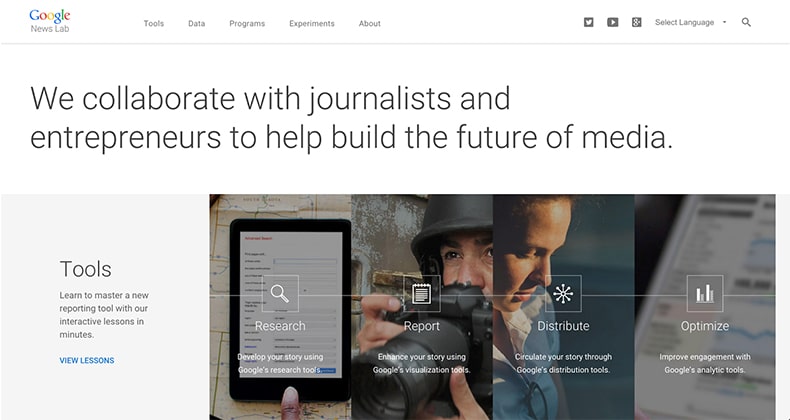
Last week, Google announced its own crowdsourced news platform dubbed News Lab as part of their efforts “to empower innovation at the intersection of technology and media.”
Scouting for real-time stories, updates, and breaking news is much easier and systematize for journalists worldwide. They can use Google’s tools for better reporting, data for insightful storytelling and programs to focus on the future of media, tackling this initiative in three ways.
“There’s a revolution in data journalism happening in newsrooms today, as more data sets and more tools for analysis are allowing journalists to create insights that were never before possible,” Google said.
Grasswire – first-hand information in real-time
The design looks bleak and simple, but the site itself is rich with content—first-hand information crowdsourced from Twitter users in real-time and verified. Austen Allred, co-founder of Grasswire was inspired to develop the platform after his “minor slipup” as the American Journalism Review (AJR) puts it, when he missed his train out of Shanghai that actually saved his life.
“The bullet train Allred was supposed to be on collided with another train in the Wenzhou area ofChina’s Zhejiang province,” AJR wrote. “Of the 1,630 passengers, 40 died, and another 210 were injured.” The accident happened in 2011. Unfortunately, the Chinese government made some cover upon the incident, which frustrated Allred in finding first-hand information.
After almost four years, Grasswire was launched, a website that collects real-time information from users for breaking news infused with crowdsourcing model afterward. “It’s since grown into a more complex interface, allowing users to curate selected news tweets by voting and verifying information with a fact-checking system,” AJR wrote, which made the verification of data open and systematized.
Rappler – Project Agos: a technology for disaster risk reduction
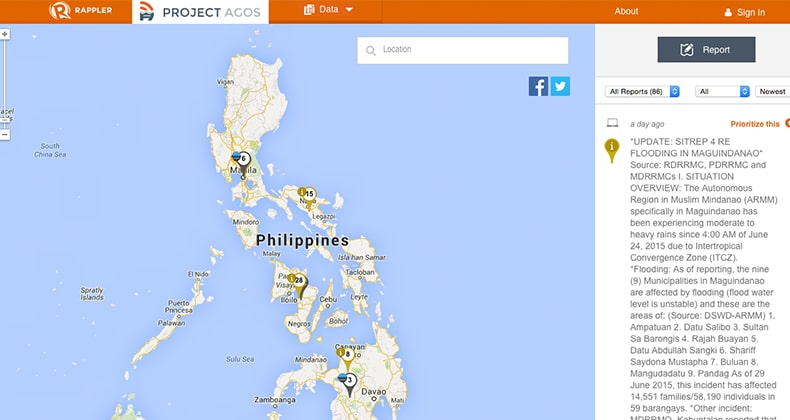
The Philippines is a favorite hub for typhoons. The aftermath of typhoon Haiyan was exceedingly disastrous. But the crowds were steadfast in uploading and sharing information and crowdsourcing became mainstream during the relief operations. Maria Ressa said that they had to educate netizens to use the appropriate hashtags for years (#nameoftyphoonPH, e.g. #YolandaPH) for typhoons to collect data on social media channels easily.
Education and preparation can mitigate the risks and save lives if we utilize the right technology and act accordingly. In her blog, After Haiyan: Crisis management and beyond, Maria wrote, “We need to educate not just the first responders and local government officials, but more importantly, the people in the path of the storms.” …
China’s CCDI app – Crowdsourcing political reports to crack down corruption practices
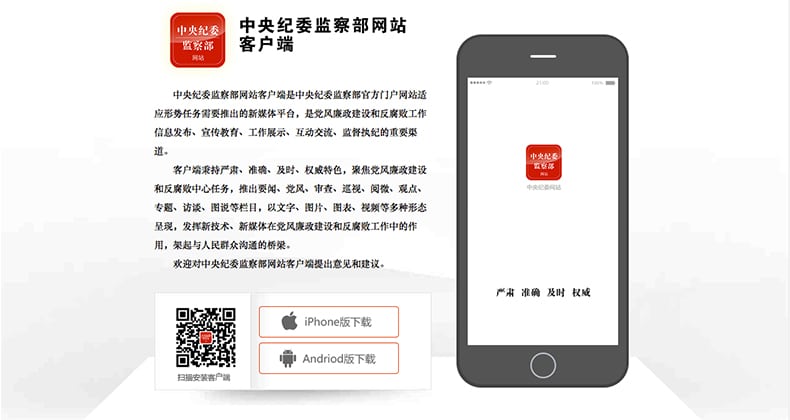
In China, if you want to mitigate or possible, eradicate corrupt practices, then there’s an app for that.China launched its own anti-corruption app called, Central Commission for Discipline InspectionWebsite App, allowing the public to upload text messages, photos and videos of Chinese officials’ any corrupt practices.
The platform was released by the government agency, Central Committee for Discipline Inspection.Nervous in case you’ll be tracked as a whistleblower? Interestingly, anyone can report anonymously.China Daily said, “the anti-corruption authorities received more than 1,000 public reports, and nearly70 percent were communicated via snapshots, text messages or videos uploaded,” since its released.Kenya has its own version, too, called Ushahidi using crowdmapping, and India’s I Paid a Bribe.
Newzulu – share news, publish and get paid
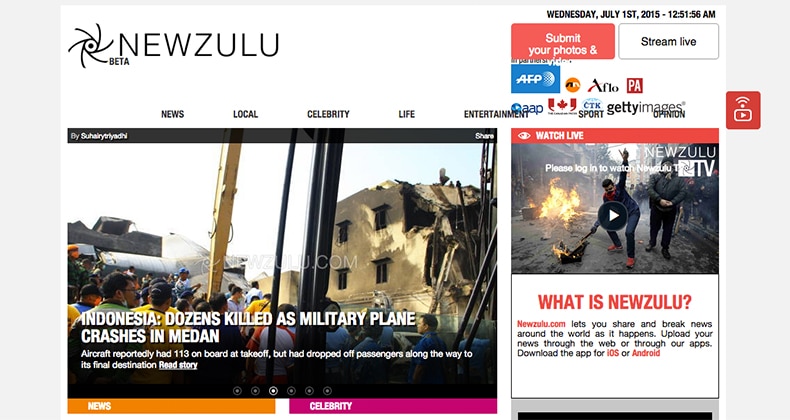
While journalists can get fresh insights from Google News Labs, the crowd can get real-time verified news from Grasswire, and CCDI is open for public, Newzulu crowdsourced news platforms doesn’t just invite the crowd to share news, they can also publish and get paid.
It’s “a community of over 150,000 professional and citizen journalists who share and break news to the world as it happens,” originally based in Sydney. Anyone can submit stories, photos, videos, and even stream live….(More)”
Book edited by Walter Vassallo: “Crowdfunding for Sustainable Entrepreneurship and Innovation is a pivotal reference source for the latest scholarly research and business practices on the opportunities and benefits gained from the use of crowdfunding in modern society, discussing its socio-economic impact, in addition to its business implications. Featuring current trends and future directions for crowdfunding initiatives, this book is ideally designed for students, researchers, practitioners, entrepreneurs, and policy makers.
New financing models such as crowdfunding are democratizing access to credit, offering individuals and communities the opportunity to support, co-create, contribute and invest in public and private initiatives. This book relates to innovation in its essence to anticipate future needs and in creating new business models without losing revenue. There are tremendous unexplored opportunities in crowdsourcing and crowdfunding; two sides of the same coin that can lead to a revolution of current social and economic models. The reading of this book will provide insight on the changes taking place in crowdfunding, and offer strategic opportunities and advantages….(More)”
Special issue of the Journal of Community Informatics edited by Raed M. Sharif and Francois Van Schalkwyk: “As the second phase of the Emerging Impacts of Open Data in Developing Countries (ODDC) drew to a close, discussions started on a possible venue for publishing some of the papers that emerged from the research conducted by the project partners. In 2012 the Journal of Community Informatics published a special issue titled ‘Community Informatics and Open Government Data’. Given the journal’s previous interest in the field of open data, its established reputation and the fact that it is a peer-reviewed open access journal, the Journal of Community Informatics was approached and agreed to a second special issue with a focus on open data. A closed call for papers was sent out to the project research partners. Shortly afterwards, the first Open Data Research Symposium was held ahead of the International Open Data Conference 2015 in Ottawa, Canada. For the first time, a forum was provided to academics and researchers to present papers specifically on open data. Again there were discussions about an appropriate venue to publish selected papers from the Symposium. The decision was taken by the Symposium Programme Committee to invite the twenty plus presenters to submit full papers for consideration in the special issue.
The seven papers published in this special issue are those that were selected through a double-blind peer review process. Researchers are often given a rough ride by open data advocates – the research community is accused of taking too long, not being relevant enough and of speaking in tongues unintelligible to social movements and policy-makers. And yet nine years after the ground-breaking meeting in Sebastopol at which the eight principles of open government data were penned, seven after President Obama injected political legitimacy into a movement, and five after eleven nation states formed the global Open Government Partnership (OGP), which has grown six-fold in membership; an email crosses our path in which the authors of a high-level report commit to developing a comprehensive understanding of a continental open data ecosystem through an examination of open data supply. Needless to say, a single example is not necessarily representative of global trends in thinking about open data. Yet, the focus on government and on the supply of open data by open data advocates – with little consideration of open data use, the differentiation of users, intermediaries, power structures or the incentives that propel the evolution of ecosystems – is still all too common. Empirical research has already revealed the limitations of ‘supply it and they will use it’ open data practices, and has started to fill critical knowledge gaps to develop a more holistic understanding of the determinants of effective open data policy and practice. As open data policies and practices evolve, the need to capture the dynamics of this evolution and to trace unfolding outcomes becomes critical to advance a more efficient and progressive field of research and practice. The trajectory of the existing body of literature on open data and the role of public authorities, both local and national, in the provision of open data
As open data policies and practices evolve, the need to capture the dynamics of this evolution and to trace unfolding outcomes becomes critical to advance a more efficient and progressive field of research and practice. The trajectory of the existing body of literature on open data and the role of public authorities, both local and national, in the provision of open data is logical and needed in light of the central role of government in producing a wide range of types and volumes of data. At the same time, the complexity of open data ecosystem and the plethora of actors (local, regional and global suppliers, intermediaries and users) makes a compelling case for opening avenues for more diverse discussion and research beyond the supply of open data. The research presented in this special issue of the Journal of Community Informatics touches on many of these issues, sets the pace and contributes to the much-needed knowledge base required to promote the likelihood of open data living up to its promise. … (More)”
